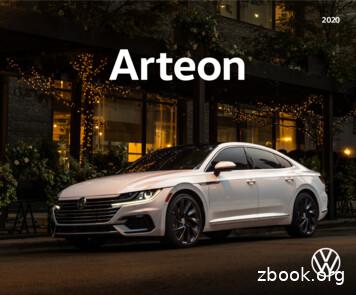End-to-end Lane Detection Through Differentiable Least-Squares Fitting
End-to-end Lane Detection throughDifferentiable Least-Squares FittingWouter Van Gansbeke, Bert De Brabandere, DavyNeven, Marc Proesmans, Luc Van GoolarXiv:1902.00293v3 [cs.CV] 5 Sep 2019ECE 285 – Autonomous Driving SystemsPresented by – Anirudh Swaminathan – April 23, 2020
Why LaneDetection?Detecting lanes is important because: Position vehicle within the lane Plan future trajectory, lane departures2
LaneDetectionBackgroundPrevious methods before this paper: Two step pipelines First step - segment lane line markings Second step - fit a lane line model to postprocessed mask3
2-stage examples Classical SIFT[20] / SURF[2] for feature extraction RANSAC / spline / polynomial for parameters of best fitting model Deep Learning Based Instance Segmentation – LaneNet [24] Curve fitting mostly same[24] - Towards End-to-End Lane Detection: an Instance Segmentation ApproachDavy Neven, Bert De Brabandere, Stamatios Georgoulis, Marc Proesmans, Luc Van Gool ESAT-PSI, KU LeuvenarXiv:1802.05591v1 [cs.CV] 15 Feb 2018[2] H. Bay, T. Tuytelaars, and L. Van Gool. Surf: Speeded up robust features. Proceedings of the EuropeanConference on Computer Vision, 2006[20] D. G. Lowe. Object recognition from local scale-invariant features. In Proceedings of the IEEE InternationalConference on Computer Vision, 1999.4
Objective ofthe Paper End-to-end manner Directly regress lane parameters5
MotivationWhy single step? Parameters not optimized for true task True task – estimating lane curvature parameters Proxy task – Segmenting lane markings Prevents instabilities in curve fitting 2 step – outliers End-to-end - implicitly learn features to prevent instabilities6
Methodology Key Idea - Integrate curve fitting step as a differentiable in-network optimization step Deep Network for the feature extraction step Key Idea - A geometric loss function for the network7
FrameworkThe framework consists of 3 main modules: Deep network to generate weighted pixel coordinates Differential weighted least squares fitting module Geometric Loss Function8
Example Architecture – Figure 1 from the paper9
Generating Weighted Pixel Coordinates First Module of network Normalized Coordinates - x map and y map Each coordinate - weight w Feature map - same spatial dimensions as that of input image10
Feature Maps Non-negative weights Width – w, height – h; m w * h M triplets generated – (x, y, w) One feature map for each lane11
Example Architecture – Figure 1 from the paper12
Weighted Least Squares Layer M triplets (x, y, w) - weighted points in 2D space Fit curve Module output - n parameters of best-fitting curve13
Background - Least Squares Fitting 𝑋𝑋𝑋𝑋 𝑌𝑌; 𝑋𝑋 𝑅𝑅𝑚𝑚𝑚𝑚𝑚𝑚 ; 𝛽𝛽 𝑅𝑅𝑛𝑛 1 ; 𝑌𝑌 𝑅𝑅𝑚𝑚 1 X is input, 𝛽𝛽 are parameters, and Y is output Least Squares - 𝛽𝛽 𝑎𝑎𝑎𝑎𝑎𝑎𝑎𝑎𝑎𝑎𝑎𝑎 𝑋𝑋𝑋𝑋 𝑌𝑌 2 Normal Equation - 𝛽𝛽 𝑋𝑋 𝑇𝑇 𝑋𝑋 1𝑋𝑋 𝑇𝑇 𝑌𝑌14
Background – Weighted Least Squares Least squares extended 𝑊𝑊 𝑅𝑅𝑚𝑚 m ; Diagonal matrix - weights for each pair of observations12 𝛽𝛽 𝑎𝑎𝑎𝑎𝑎𝑎𝑎𝑎𝑎𝑎𝑎𝑎 𝑊𝑊 (𝑋𝑋𝑋𝑋 𝑌𝑌) 2 𝑋𝑋 𝑇𝑇 𝑊𝑊𝑊𝑊𝑊𝑊 𝑋𝑋 𝑇𝑇 𝑊𝑊𝑊𝑊 𝛽𝛽 𝑋𝑋 𝑇𝑇 𝑊𝑊𝑋𝑋 1𝑋𝑋 𝑇𝑇 𝑊𝑊𝑌𝑌15
Backprop through the layer Equations involve differentiable matrix operations Calculate the derivative of 𝛽𝛽 wrt W Refer to [10] to derive backpropM. B. Giles. An extended collection of matrix derivative results for forward and reverse mode automaticdifferentiation.Technical report, University of Oxford, 2008.16
Example Architecture – Figure 1 from the paper17
Geometric Loss Function - precursor Usually, L2 loss used for curve fitting Here, 𝛽𝛽𝑖𝑖 and 𝛽𝛽 𝑖𝑖 - generated and groundtruth curve parameters18
Geometric Loss Function Lane Detection - geometric interpretation Minimize squared area between predicted curve and ground truth curve19
Geometric Meaning20
Geometric Loss Function – Parabola This paper - lane curves parabolic 𝑦𝑦 𝛽𝛽0 𝛽𝛽1 𝑥𝑥 𝛽𝛽2 𝑥𝑥 2 ; Δ𝛽𝛽𝑖𝑖 𝛽𝛽𝑖𝑖 𝛽𝛽 𝑖𝑖21
Optional Transformations Weighted coordinates - another reference frame Use fixed transformation matrix H Lane line - better as parabola from top-down/ortho view(BEV)22
Experiment – Ego Lane Detection Ego lane - the current lane of the vehicle Two lane marking - one left and one right Parabola - upto fixed distance t from car Overall error average over 2 lanes, and average over images23
Dataset TuSimple Dataset [29] Manually select and clean up the annotations of 2535 images Filter out images where ego-lane cannot be detected unambiguously 20% images - validation set Not include images of single temporal sequence in both train and val sets[29] TuSimple. Tusimple benchmark, 2017.24
Annotation Ground truth curve parameters - parabola Draw curve of fixed thickness as dense label25
Baseline – Cross-entropy training Training Segmentation Per-pixel binary cross-entropy loss Testing Segmentation mask generated Parabola fitted in least squares sense26
End-to-end training ERFNet [28] - network architecture 350 epochs; 1 GPU; 256*512 resolution; batch size 8 Adam[19] with LR 10 4 PyTorch [26][28] E. Romera, J. M. Alvarez, L. M. Bergasa, and R. Arroyo. Efficient convnet for real-time semantic segmentation.In IEEE Intelligent Vehicles Symposium, pages 1789–1794, 2017.[19] D. P. Kingma and J. Ba. Adam: A method for stochastic optimization. In Proceedings of the InternationalConference on Learning Representations, 2015.[26] A. Paszke, S. Gross, S. Chintala, G. Chanan, E. Yang, Z. De- Vito, Z. Lin, A. Desmaison, L. Antiga, and A. Lerer.Automatic differentiation in pytorch. In NIPS-W, 2017.27
Example Architecture – Figure 1 from the paper28
Detour ERFNet29
ERFNet Semantic Segmentation Typical Encoder – Decoder architecture Last layer - adapted to output 2 feature maps One for each ego lane Transform weighted coordinates using fixed H to top-down view[28] E. Romera, J. M. Alvarez, L. M. Bergasa, and R. Arroyo. Efficient convnet for real-time semantic segmentation.In IEEE Intelligent Vehicles Symposium, pages 1789–1794, 201730
Results - Quantitative31
Result – Training curves32
Qualitative Results33
Analysis Lower error than cross-entropy method Convergence slower - supervision signal weaker Generated weight maps look like segmentation maps the network eventually discovers that the most consistent way to satisfy the loss function is to focuson the visible lane markings in the image, and to map them to a segmentation-like representationin the weight maps.34
Further Experiments – Multi-lane detection 4 lanes total - ortho-view Line prediction branch; horizon prediction branch Horizon prediction branch - regression - estimate horizon Line prediction branch - whether lane is present or not35
Architecture36
Architecture details Side branches - 4 conv layers - each 3x3 Then max pool - FC layer Losses for 3 tasks - combined linearly37
Dataset 3626 images 20% validation set 2782 test set images38
Comparison ERFNet without backprop through least squares layer - baseline [25] Spatial CNN [24] - Instance Segmentation approach[24] D. Neven, B. De Brabandere, S. Georgoulis, M. Proesmans, and L. Van Gool. Towards end-to-end lanedetection: an instance segmentation approach. arXiv:1802.05591, 2018.[25] X. Pan, J. Shi, P. Luo, X. Wang, and X. Tang. Spatial as deep: Spatial cnn for traffic scene understanding. InAAAI, 2018.39
Results Quantitative40
Results Qualitative41
Analysis Improve upon baseline by 0.7% Faster than benchmarks in test time - no post-processing required 71 fps on NVIDIA 1080Ti42
ADVANTAGES Optimized for true task - prevents instabilities in curve fitting Offers degree of interpretability Generated weight maps - segmentation-like Can be inspected and visualized Geometry aware criterion is loss function Handle large variance, faded lane markings Moves complexity from post-processing to network - one-shot fitting43
DISADVANTAGES Loss function - more complicated for higher order curves Fixed transformation H to ortho-view If ground plane is different (ex. Sloping uphill), then bad lane parameters in test time Local minimum possible – author Vanishing point in horizon/left corner of image features - good curve - no improvement Multi-lane - fixed number of maps - pre-defined order Lane changes hard; Order ambiguous Instance segmentation - not subject to specific order Quantitative results - comparatively worse from slide 4044
KEY TAKEAWAYS Including differentiable in-network optimization step. Geometric Loss function relevant to the task45
Question to the class Why do you think that the loss in the Least Squares layer is only back-propagated to thecoordinate weights only, and not to the coordinates themselves?46
THANK YOU!
Questions?
Differentiable Least-Squares Fitting Wouter Van Gansbeke, Bert De Brabandere, Davy Neven, Marc Proesmans, Luc Van Gool arXiv:1902.00293v3 [cs.CV] 5 Sep 2019 . Curve fitting mostly same [24] - Towards End-to-End Lane Detection: an Instance Segmentation Approach Davy Neven, Bert De Brabandere, Stamatios Georgoulis, Marc Proesmans, Luc Van Gool .
used: LA Taq (lane 3), Q-BioTaq (lane 4), Vent Exo (lane 5), Sequitherm (lane 6), Deep Vent Exo (lane 7), ThermalAce (lane 8), Thermus (lane 9), and Taq (lane 10). be due to template independent extension of the fully extended strand by one or a few
Lane Keeping System (Lane Assist)* When moving above 37 mph, the available Lane Keeping System (Lane Assist) can sense if you start to drift into another lane without using the turn signal. Within the limits of the system, Lane Assist can help keep you in the current lane when lane
lane 47: jay read -saylorsburg, pa (26 years) lane 49: michael morgan -cleveland, oh (24 years) lane 53: robert thomas-sun valley, nv (23 years) lane 54: michael ascunsion -santa clara, ca (23 years) lane 58: justin jordan -fargo, nd (20 years) lane 19: dave rasmus -minneapolis, mn (27 years)
When a bike lane intersects with a one way street, or where right turns are prohibited, the bike lane is solid all the way to the intersection. (e.g. bike lane with parking; intersection with 1-way arterial street) www.bicyclinginfo.org Bike Lane Design Guide 3 A new bike lane is stripped on Lincoln.
Rapid detection kit for canine Parvovirus Rapid detection kit for canine Coronavirus Rapid detection kit for feline Parvovirus Rapid detection kit for feline Calicivirus Rapid detection kit for feline Herpesvirus Rapid detection kit for canine Parvovirus/canine Coronavirus Rapid detection kit for
1.64 6 M10 snow/ice detection, water surface cloud detection 2.13 7 M11 snow/ice detection, water surface cloud detection 3.75 20 M12 land and water surface cloud detection (VIIRS) 3.96 21 not used land and water surface cloud detection (MODIS) 8.55 29 M14 water surface ice cloud detection
Getting Started SIDRA 6.docx iii. Slip/Bypass (Low Angle): a turn lane that bypasses the circulating lanes at a low angle, usually separated by an island, and has an exclusive lane on the RAB exiting leg c. Lane Control: select Giveway/Yield d. Slip/Bypass Lane Control: (select only if a slip lane is present) i.
5/28/2013 3 Medians New Card New Card Add 1’ Add 3’ Local Access Lane Local Access Lane New Card “Families” of Cross Sections Dimension range for Cross Section Families – Four lane 92 to 130 feet 67 to 134 feet – Four lane plus transit lanes 116 to 154 feet 89 to 156 feet – Six lane 114 to 152 feet 89 to 152 feet























